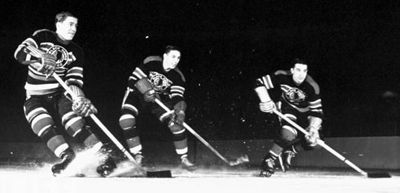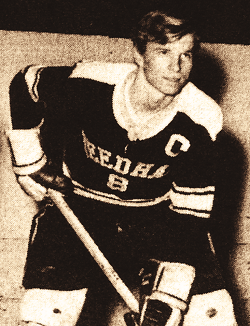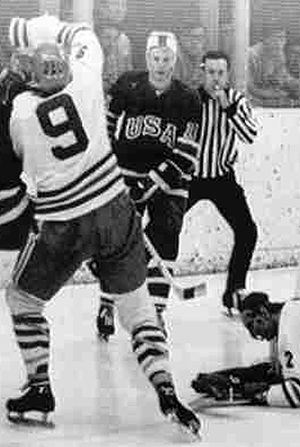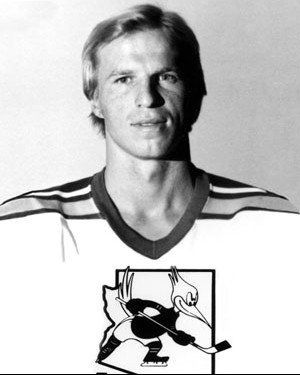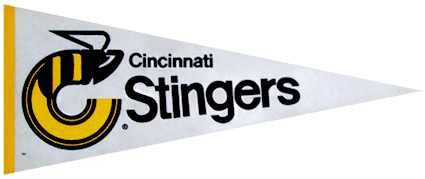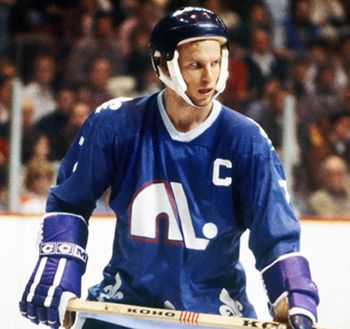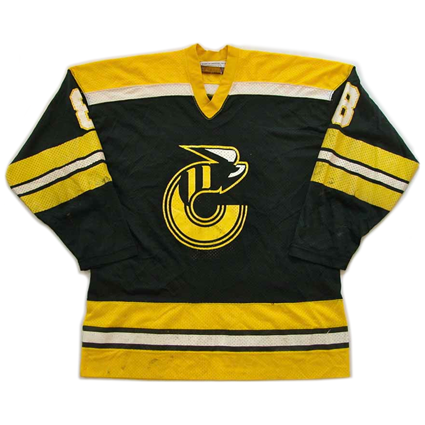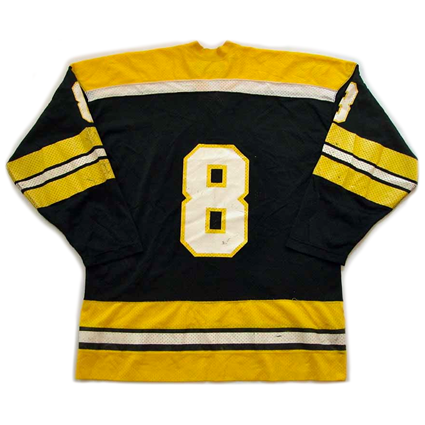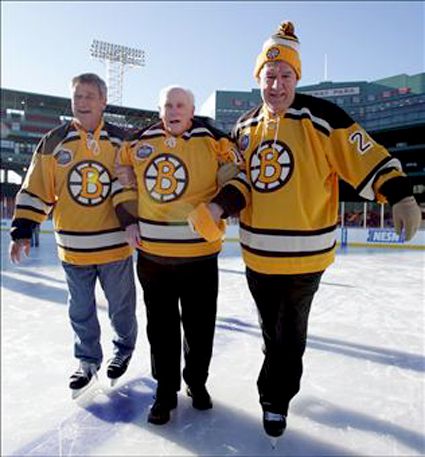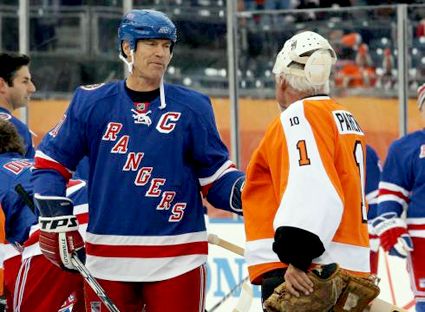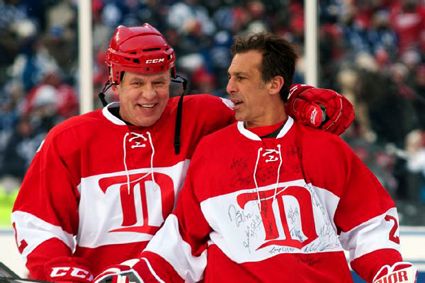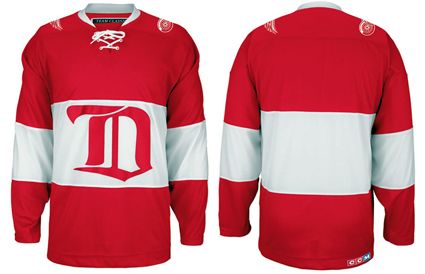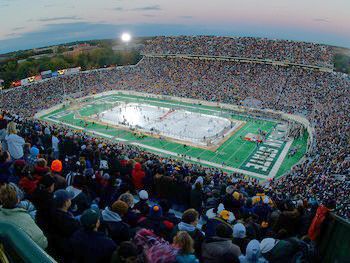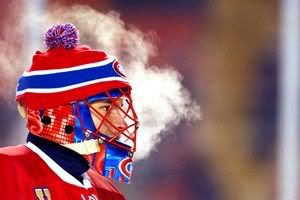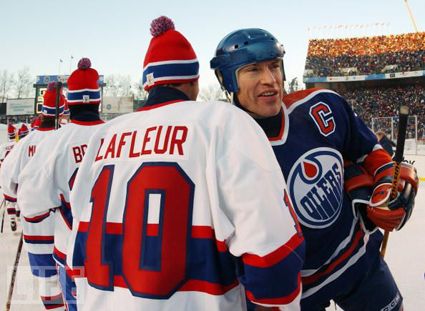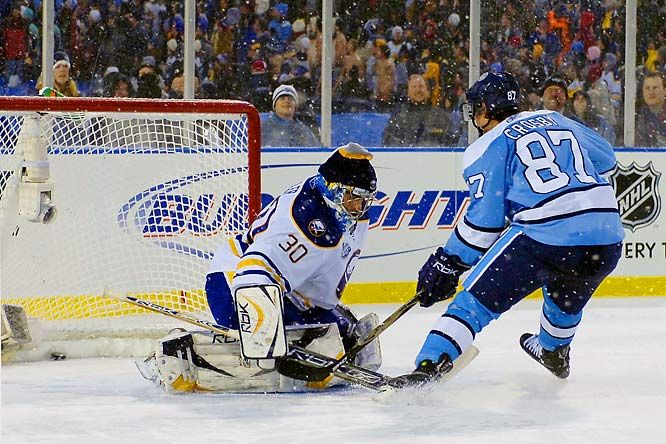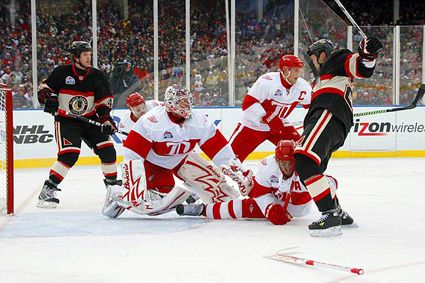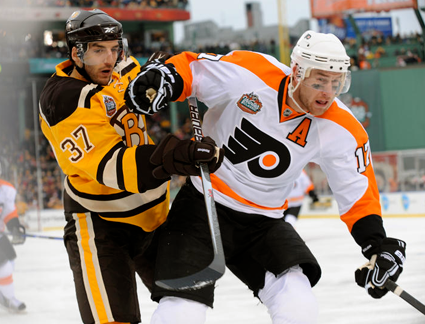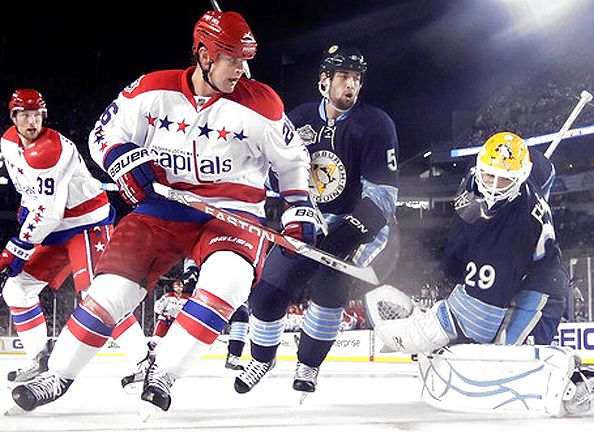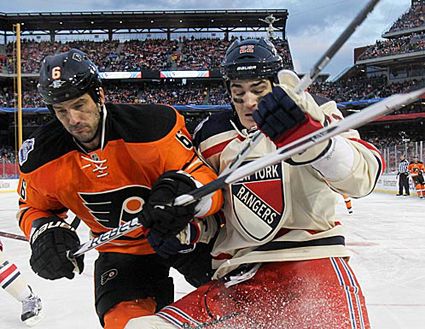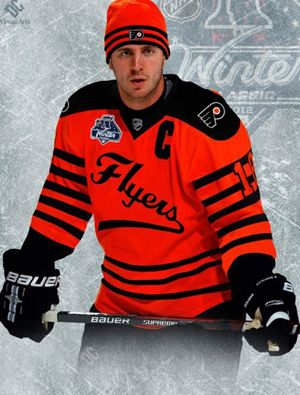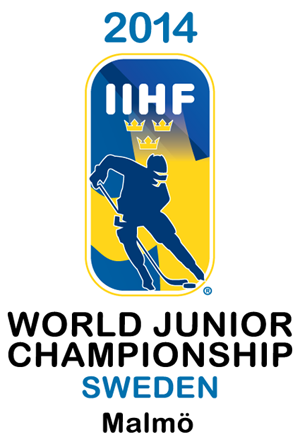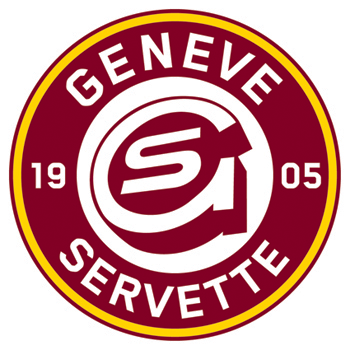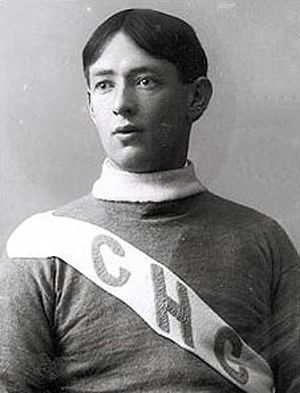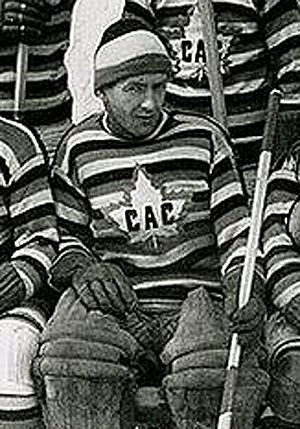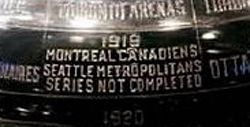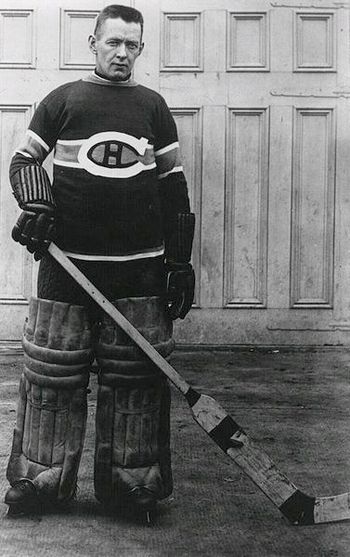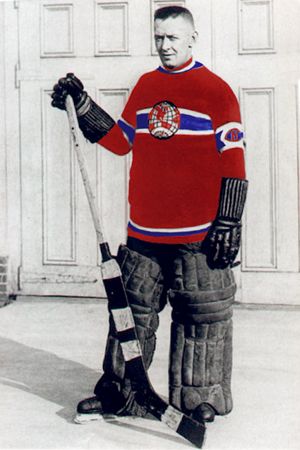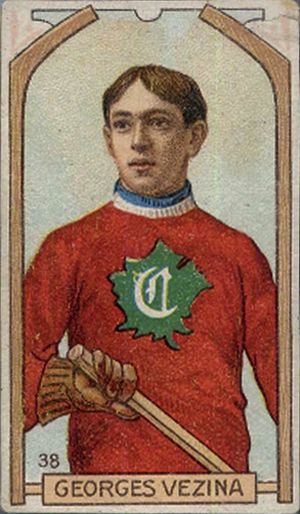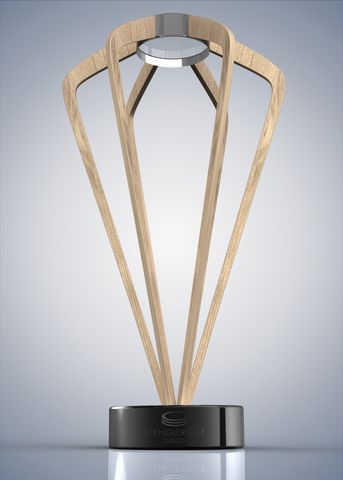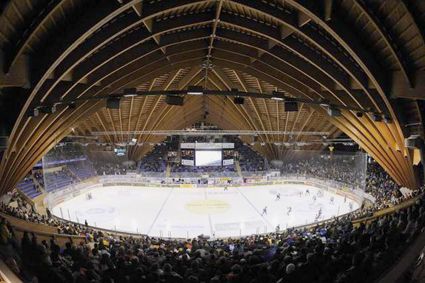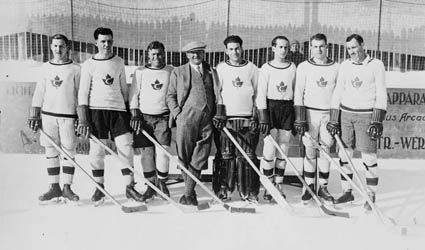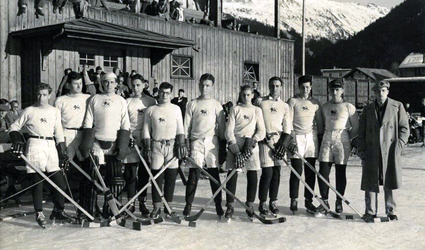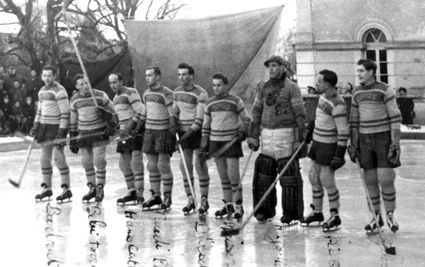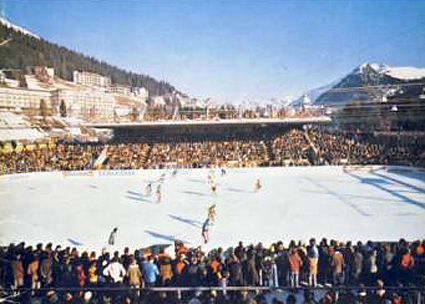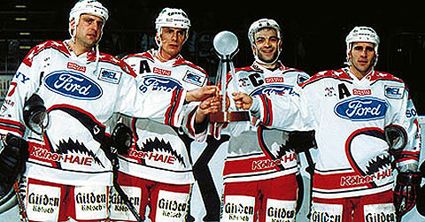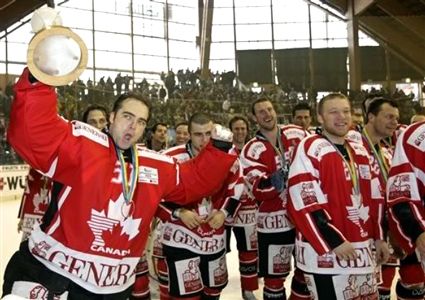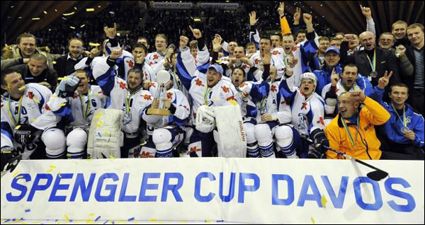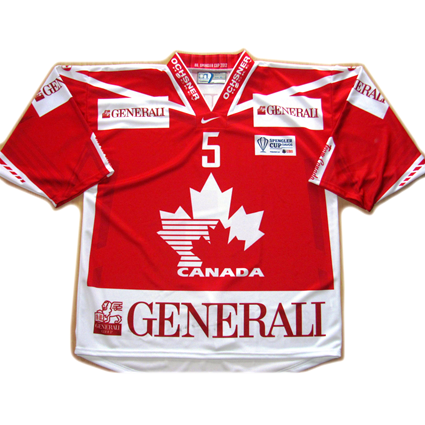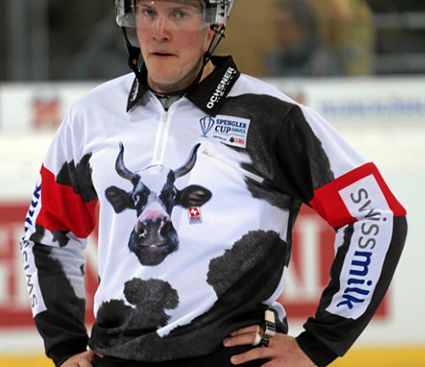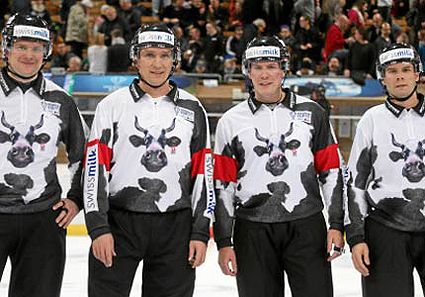The NHL's 6th
Winter Classic takes place today, Wednesday, January 1st, at Michigan Stadium, home of the Michigan Wolverines.
The original inspiration for the Winter Classic must be given to
The Cold War, an outdoor game held at Spartan Stadium in nearby East Lansing, Michigan when Michigan State University and the University of Michigan, then of the CCHA, battled to a 3-3 tie in front of 74,544 fans, an attendance figure which no doubt raised eyebrows with the powers that be across the NHL.
The Cold War
The first to to embrace the concept in the NHL was the Edmonton Oilers, who hosted the Montreal Canadiens on November 22, 2003 in what was dubbed The Heritage Classic at Commonwealth Stadium, home of the CFL's Edmonton Eskimos.
Jose Theodore famously wearing a toque during the Heritage Classic
In addition to the game itself, which counted in the NHL's regular season standings, the event drew a great deal of publicity for the MegaStars Game, an exhibition game between Oilers legends from their 1980's dynasty versus a team of Canadiens legends from their dynasty of the 1970's. To date, that event is the one and only time
Wayne Gretzky has taken part in an NHL old-timers game of any kind, and something he has publicly stated will be the only time. Such was the importance of the event in Canada, that
Mark Messier received special permission from the New York Rangers to take part in the game despite being the only player still active in the NHL.
Mark Messier congratulates Guy Lafleur following the MegaStars game
The Winter Classic began in 2008 when the Pittsburgh Penguins faced off against the host Buffalo Sabres at Ralph Wilson Stadium, primary home of the Buffalo Bills of the NFL. The game was a tremendous success on many levels, as 71,217 fans set an NHL attendance record, the weather cooperated with a picturesque snowfall during the game and the most visible player in the league,
Sidney Crosby, scored the game winning goal in the shootout for Pittsburgh.
One other element of the game was an outstanding success, the use of throwback jerseys by both the Penguins and Sabres. The Penguins revived their powder blue road jerseys from the 1970-71 season while the Sabres opted for their original home white jerseys from the same 1970-71 season.
Crosby scores the game winning goal in his light blue throwback jersey
The Sabres jerseys were very well received as the club was presently wearing their controversial "
Buffaslug" jerseys at the time as fans longed for a full-time return to the team's original look. An updated version of their classic blue jersey was the first result, being introduced the following season and became the team's primary jersey two seasons later.
The Penguins, fueled by the popularity of stars Evgeni Malkin, and especially that of Crosby, adopted the 2008 Winter Classic jersey as their alternate jersey the following season and sold them by the thousands.
The use of throwback and retro styled jerseys at the Winter Classic has remained, with the Chicago Blackhawks hybrid style of a 1935-36 jersey mated with a 1948 logo taking on the Detroit Red Wings, who employed the jerseys originally worn by the Detroit Cougars in the franchise's first season of 1926-27. The Blackhawks jerseys continued to live on, with the addition of a secondary logo on the shoulders as the club's third jersey for the next couple of seasons.
The 2009 Winter Classic at Wrigley Field
In 2010, the Philadelphia Flyers, whose jerseys haven't changed all that much since their inception, stripped away many of the modern additions to their jerseys and reverted to a simpler style based on their 1970's jerseys with the revival of the contrasting color nameplate, which is based on the Flyers only having one set of white nameplates made up in the days when teams had to add names to their jerseys for national TV games. This jersey was a white version of their current orange third jersey, and when it was promoted to the primary jersey for 2010, the white Winter Classic jersey was revived as the Flyers new road jersey and remains in use four seasons later.
The Boston Bruins also went the hybrid route in 2010 and created a striking jersey that used the 1958-59 jersey template done in the brown and gold colors the Bruins wore during their first decade mated with the crest from their first use of the famed spoked "B" logo in 1948. Additionally, the crest and numbers were done in a retro felt material, which only enhanced the retro effect that much more.
The 2010 Winter Classic held at Fenway Park
For 2011 at the Pittsburgh Steelers Heinz Field, both the host Penguins and the Washington Capitals produced special jerseys. The Penguins have gone back to their inaugural season for inspiration by using their first jersey's original template and unique number font, but with the navy and light blue colors reversed. They then decorated it with a an original and unused version of their
skating penguin logo, a thinner penguin wearing a winter scarf. Again, this jersey lived on beyond the Winter Classic, being used as an alternate through the 2012-13 season.
The Capitals also returned to their roots, reviving their original star spangled red, white and blue jerseys used from 1974 until 1995. This jersey still remains in use as an alternate for Washington.
Aside from the jerseys, this game is best remembered for being postponed until the evening for more favorable weather conditions, only to have it plagued by rain which affected play more than any other game, and for the collision which left star Crosby concussed, an injury which was compounded by another hit shortly thereafter which caused him to miss months of action.
The 2012 Winter Classic was the second appearance for the Flyers, who hosted the New York Rangers at Citizens Bank Ballpark, home of the Philadelphia Phillies MLB team. With so few styles to choose from in their past, and still wearing their first Winter Classic jerseys, the Flyers created a brand new jersey with a retro feel. This jersey had simple, classic hockey styling, the use of a contrasting nameplate and was topped off with keystone shaped patches which housed the captain's "C" and assistant captain's "A's".
The Rangers went the same route, creating a cream colored jersey with visual striping cues from their past topped off with an old version of their shield logo, which complimented the Flyers similar effort quite nicely.
One interesting story to arise out of the 2012 classic was the early guess work done by fans as to what the teams' jerseys would look like. Once such concept was a very professional effort in which the Flyers jerseys were based on the first NHL team to call Philadelphia home,
the Quakers.
Done far enough in advance and with such a high degree of creativity and skill, counterfeit manufacturers overseas put the concept into production well in advance of the announcement of the actual jerseys, ruining any chance this design had of being put into production had the Flyers actually been considering such an idea.
Originally scheduled for January 1, 2013, but not played due to the ongoing NHL lockout at the time, today's game is expected to set a world record for attendance at a hockey game, with an expected 110,000+ crammed into "The Big House". For today's game the host Red Wings opted for the faux-back route, creating a new jersey with retro styling. Unique features of this style are the captain's "C" and "A's" being on the sleeves and the retro styled number font, which the Minnesota Wild should have adopted for it's retro themed jerseys back in 2003.
The main criticism of the Red Wings jerseys in the unnecessary use of "DETROIT" over the iconic winged wheel logo.
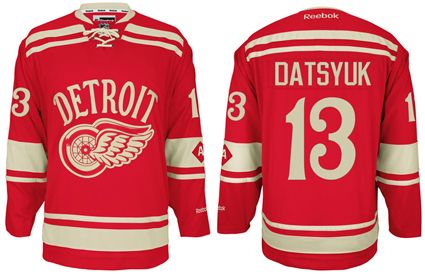
One new aspect of this year's matchup is the Red Wings opponent, the Toronto Maple Leafs, the first Canadian team to play in the Winter Classic. While Toronto's jersey is an attractive one, it does disappoint us somewhat, as the Maple Leafs have already worn this style dating from 1931 previously, that being the occasion of the
65th Anniversary of Maple Leaf Gardens in 1996-97 when it was worn twice.
Those jerseys were produced in a special edition, limited to just 1,931 jerseys and was one of the most desirable and collectable jerseys in the hobby, which we feel has had the luster taken off of it's limited nature now that it has been remade in large quantities, even if the new variation has differences such as white shoulders and collar with laces on the front.
One other aspect of this jersey is it's color - blue! This leaves us with a color on color matchup, which should look great on TV against the white ice, although reversing the color of the Maple Leafs jerseys to white with blue striping could have been done to protect the exclusivity of the 1996-97 limited edition.
Here is a preview of today's game and a look at the rivalry between the two Original 6 franchises.
